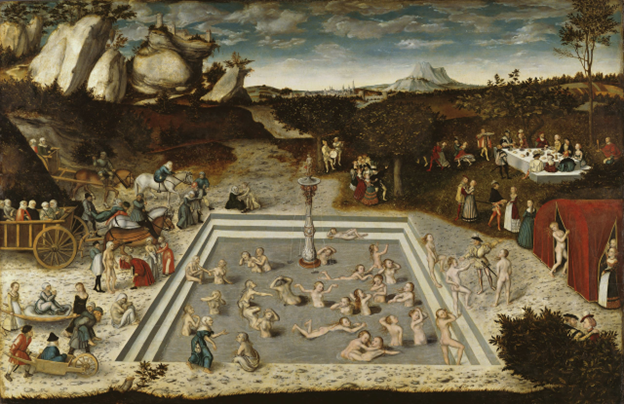Bridging the Divide: An Architecture of Demographic Transition

- Der Jungbrunnen (The Fountain of Youth), Lucas Cranach the Elder, 1546
ARC3020Y F
Instructor(s): Shane Williamson | shane.williamson@daniels.utoronto.ca
Meeting Section: L0107
Tuesday, 9:00am - 1:00pm, 2:00pm - 6:00pm
Do not go gentle into that good night,
Old age should burn and rave at close of day;
Rage, rage against the dying of the light.
- Dylan Thomas
Global populations are aging—according to the UN, by 2030 the number of citizens aged 60 years or over is projected to grow by 56%, a figure which by 2050 is expected to double again, to a total of 2.1 billion seniors worldwide. This fundamental shift toward more aged populations isn’t the result of evolutionary development but rather a process of societal modernization linked directly to urbanization and industrialization and while we have seen moments in recent history during which society responded to demographic transitions, like the explosive construction of schools in North America in the 1950s and 60s linked to the Baby Boomer generation, we are not seeing equivalent consideration for the same generation as it ages. As a result, we now understand our urban settings to be designed for societies dominated by the young but increasingly populated by the old.
Adding to this demographic shift is the societal tendency towards intergenerational fracturing, in which developed nations have seen a dramatic shift away from multigeneration housing to single-generation housing for the elderly. This shift has manifested itself in several forms with
aging-in-place and age-segregated communities reflecting opposite ends of the spectrum. While aging-in-place often holds the ideological high ground in the debate on approaches to housing the elderly, it is not uncommon for “empty nesters” to find themselves socially and spatially isolated from others, and from other retirees, as the neighborhoods in which they live were constructed predominantly around activities of the nuclear family, those focused on childhood and adulthood. Meanwhile, studies show that aging populations fear social isolation and loss of purpose more than death which brings to question the model of aging-in-place where the place proves resistant to shifting demographic needs. Alternately, age-segregated communities often represent unsustainable low density land development and corresponding disinvestment in the residual public domain while deeply reinforcing societal fracturing across generational lines.
The first iteration of this research studio traveled to Denmark to visit a number of multi-generational projects including the Generations House in Aarhus. This iteration of the studio will visit Sun City in Arizona accompanied by visits to Frank Lloyd Wright’s Taliesen West, and nearby national parks, including the Grand Canyon and the Upper Antelope Canyon. While there is much to learn from age-segregated communities like Sun City - described by Italian urban theorist Marco D'Eramo as one of "the most radical social experiments of the twentieth century" – the focus of this research studio will be upon finding common ground amongst generations.
Through precedent research, urban analysis, and iterative design strategies, students will broadly examine the issue of aging in the urban realm with a particular emphasis upon resisting the notion of homogeneity while privileging interconnectedness that underwrites vital social life. Students will utilize and expand upon the research and design methodologies proposed in the first iteration of this research studio with a particular emphasis upon arriving at an initial architectural proposal in the first semester to be further developed and refined in the second semester.
It is anticipated that students will have unique socio-cultural underpinnings resulting in equally unique research trajectories, sites, and architectural propositions throughout our two-semester studio.
Selected links from the 2021-22 research studio group:
Introductory research, https://bridgingthedivide.cargo.site
Student work, Erik Roberson, https://newdanchi.cargo.site/

